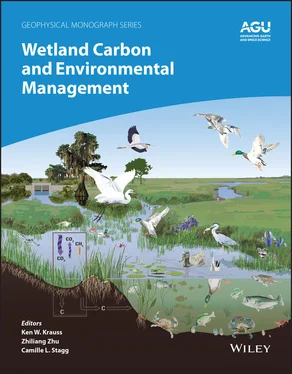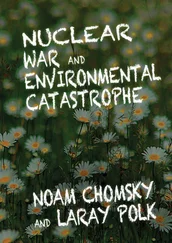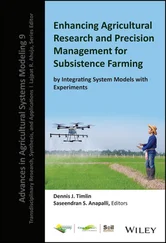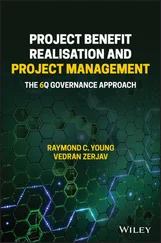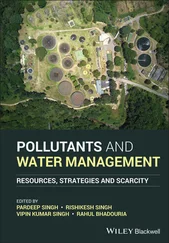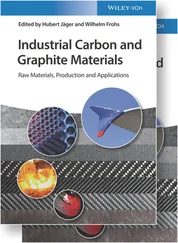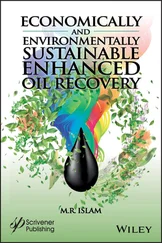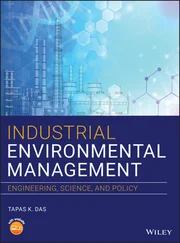339 Parkes, R. J., Gibson, G. R., Mueller‐Harvey, I., Buckingham, J. W., & Herbert, R. A. (1989). Determination of the substrates for sulphate‐reducing bacteria within marine and estuarine sediments with different rates of sulphate reduction. Journal of General Microbiology, 135(1), 175–187. https://doi.org/10.1099/00221287‐135‐1‐175
340 Pärn, J., Verhoeven, J. T. A., Butterbach‐Bahl, K., Dise, N. B., Ullah, S., Aasa, A., et al. (2018). Nitrogen‐rich organic soils under warm well‐drained conditions are global nitrous oxide emission hotspots. Nature Communications, 9(1), 1–8. https://doi.org/10.1038/s41467‐018‐03540‐1
341 Parton, W. J., Mosier, A. R., Ojima, D. S., Valentine, D. W., Schimel, D. S., Weier, K., & Kulmala, A. E. (1996). Generalized model for N2 and N2O production from nitrification and denitrification. Global Biogeochemical Cycles, 10, 401–412. https://doi.org/10.1029/96GB01455
342 Pastor, J., Solin, J., Bridgham, S. D., Updegraff, K., Harth, C., Weishampel, P., & Dewey, B. (2003). Global warming and the export of dissolved organic carbon from boreal peatlands. Oikos, 100(2), 380–386. https://doi.org/10.1034/j.1600‐0706.2003.11774.x
343 Pawson, R. R., Evans, M. G., & Allott, T. E. H. A. (2012). Fluvial carbon flux from headwater peatland streams: Significance of particulate carbon flux. Earth Surface Processes and Landforms, 37(11), 1203–1212. https://doi.org/10.1002/esp.3257
344 Pendleton, L., Donato, D. C., Murray, B. C., Crooks, S., Jenkins, W. A., Sifleet, S., et al. (2012). Estimating global “blue carbon” emissions from conversion and degradation of vegetated coastal ecosystems. PloS One, 7(9), e43542. https://doi.org/10.1371/journal.pone.0043542
345 Petrescu, A. M. R., Lohila, A., Tuovinen, J.‐P., Baldocchi, D. D., Desai, A. R., Roulet, N. T., et al. (2015). The uncertain climate footprint of wetlands under human pressure. Proceedings of the National Academy of Sciences, 112(15), 4594–4599. https://doi.org/10.1073/pnas.1416267112
346 Petrone, K. C., Hinzman, L. D., Shibata, H., Jones, J. B., & Boone, R. D. (2007). The influence of fire and permafrost on sub‐arctic stream chemistry during storms. Hydrological Processes, 21, 423–434. https://doi.org/10.1002/hyp.6247
347 Petrone, R. M., Waddington, J. M., & Price, J. S. (2003). Ecosystem‐scale flux of CO2 from a restored vacuum harvested peatland. Wetlands Ecology and Management, 11(6), 419–432. https://doi.org/10.1023/B:WETL.0000007192.78408.62
348 Poffenbarger, H. J., Needelman, B. A., & Megonigal, J. P. (2011). Salinity influence on methane emissions from tidal marshes. Wetlands, 31(5), 831–842. https://doi.org/10.1007/s13157‐011‐0197‐0
349 Poindexter, C. M., Baldocchi, D. D., Matthes, J. H., Knox, S. H., & Variano, E. A. (2016). The contribution of an overlooked transport process to a wetland’s methane emissions. Geophysical Research Letters, 43, 6276–6284. https://doi.org/10.1002/2016GL068782
350 Pracht, L. E., Tfaily, M. M., Ardissono, R. J., & Neumann, R. B. (2018). Molecular characterization of organic matter mobilized from Bangladeshi aquifer sediment: Tracking carbon compositional change during microbial utilization. Biogeosciences, 15(6), 1733–1747. https://doi.org/10.5194/bg‐15‐1733‐2018
351 Prananto, J. A., Minasny, B., Comeau, L., Rudiyanto, R., & Grace, P. (2020). Drainage increases CO2 and N2O emissions from tropical peat soils. Global Change Biology, 26(8), 4583–4600. https://doi.org/10.1111/gcb.15147
352 Pschenyckyj, C. M., Clark, J. M., Shaw, L. J., Griffiths, R. I., & Evans, C. D. (2020). Effects of acidity on dissolved organic carbon in organic soil extracts, pore water and surface litters. Science of the Total Environment, 703. https://doi.org/10.1016/j.scitotenv.2019.135585
353 Raghoebarsing, A. A., Pol, A., Van De Pas‐Schoonen, K. T., Smolders, A. J. P., Ettwig, K. F., Rijpstra, W. I. C., et al. (2006). A microbial consortium couples anaerobic methane oxidation to denitrification. Nature, 440(7086), 918–921. https://doi.org/10.1038/nature04617
354 Randerson, J. T., Masiello, C. A., Still, C. J., Rahn, T., Poorter, H., & Field, C. B. (2006). Is carbon within the global terrestrial biosphere becoming more oxidized? Implications for trends in atmospheric O2. Global Change Biology, 12(2), 260–271. https://doi.org/10.1111/j.1365‐2486.2006.01099.x
355 Raymond, P. A., & Hopkinson, C. S. (2003). Ecosystem modulation of dissolved carbon age in a temperate marsh‐dominated estuary. Ecosystems, 2003(6), 694–705. https://doi.org/10.1007/s10021‐002‐0213‐6
356 Raymond, P. A., Bauer, J. E., Caraco, N. F., Cole, J. J., Longworth, B., & Petsch, S. T. (2004). Controls on the variability of organic matter and dissolved inorganic carbon ages in northeast US rivers. Marine Chemistry, 92(1‐4 Spec. Iss.), 353–366. https://doi.org/10.1016/j.marchem.2004.06.036
357 Reddy, K. R., & DeLaune, R. D. (2008). Biogeochemistry of Wetlands: Science and Applications. Boca Raton, FL: CRC Press.
358 Regnier, P., Friedlingstein, P., Ciais, P., Mackenzie, F. T., Gruber, N., Janssens, I. A., et al. (2013). Anthropogenic perturbation of the carbon fluxes from land to ocean. Nature Geoscience, 6(8), 597–607. https://doi.org/10.1038/ngeo1830
359 Reid, M. C., Tripathee, R., Schäfer, K. V. R., & Jaffé, P. R. (2013). Tidal marsh methane dynamics: Difference in seasonal lags in emissions driven by storage in vegetated versus unvegetated sediments. Journal of Geophysical Research: Biogeosciences, 118(4), 1802–1813. https://doi.org/10.1002/2013JG002438
360 Rejmánková, E., & Houdková, K. (2006). Wetland plant decomposition under different nutrient conditions: What is more important, litter quality or site quality? Biogeochemistry, 80(3), 245–262. https://doi.org/10.1007/s10533‐006‐9021‐y
361 Richards, D. R., & Friess, D. A. (2016). Rates and drivers of mangrove deforestation in Southeast Asia, 2000‐2012. Proceedings of the National Academy of Sciences of the United States of America, 113(2), 344–349. https://doi.org/10.1073/pnas.1510272113
362 Richardson, C. J. (2003). Pocosins: Hydrologically isolated or integrated wetlands on the landscape? Wetlands, 23(3), 563–576. https://doi.org/10.1672/0277‐5212(2003)023[0563:PHIOIW]2.0.CO;2
363 Richey, J. E., Melack, J. M., Aufdenkampe, A. K., Ballester, V. M., & Hess, L. L. (2002). Outgassing from Amazonian rivers and wetlands as a large tropical source of atmospheric CO2. Nature, 6416(1991), 6413–6416.
364 Riedel, T., Zak, D., Biester, H., & Dittmar, T. (2013). Iron traps terrestrially derived dissolved organic matter at redox interfaces. Proceedings of the National Academy of Sciences of the United States of America, 110(25), 10101–10105. https://doi.org/10.1073/pnas.1221487110
365 Rixen, T., Baum, A., Wit, F., & Samiaji, J. (2016). Carbon leaching from tropical peat soils and consequences for carbon balances. Frontiers in Earth Science, 4(July). https://doi.org/10.3389/feart.2016.00074
366 Roden, E. E., & Wetzel, R. G. (1996). Organic carbon oxidation and suppression of methane production by microbial Fe(III) oxide reduction in vegetated and unvegetated freshwater wetland sediments. Limnology and Oceanography, 41(8), 1733–1748. https://doi.org/10.4319/lo.1996.41.8.1733
367 Roslev, P., & King, G. M. (1996). Regulation of methane oxidation in a freshwater wetland by water table changes and anoxia. FEMS Microbiology Ecology, 19(2), 105–115. https://doi.org/10.1016/0168‐6496(95)00084‐4
368 Roychoudhury, A. N., Kostka, J. E., & Van Cappellen, P. (2003). Pyritization: a palaeoenvironmental and redox proxy reevaluated. Estuarine, Coastal and Shelf Science, 57(5–6), 1183–1193. https://doi.org/10.1016/S0272‐7714(03)00058‐1
369 Rozsa, R. (1995). Human impacts on tidal wetlands: History and regulations. In G. D. Dreyer & W. A. Niering (Eds.), Tidal Marshes of Long Island Sound: Ecology, History, and Restoration (pp. 42–50). New London, CT: Connecticut College Arboretum.
Читать дальше
